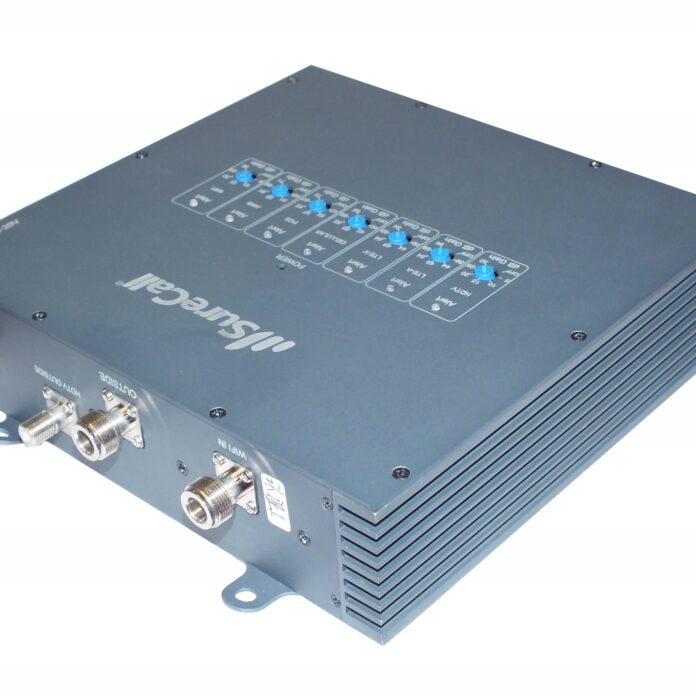LAS VEGAS – Service providers that want to boost coverage and capacity indoors often consider DAS, small cells, signal boosters and/or Wi-Fi offload, or a combination of these approaches. Infrastructure providers are looking at ways to combine more than one of these solutions, and now one of the leading makers of cell signal boosters has combined a cell signal booster with support for Wi-Fi and HDTV.
SureCall said its Fusion 7, expected to ship this quarter, can enhance signal reception for all wireless carriers and can boost Wi-Fi signal strength when connected to an Internet router. It supports up to 10 simultaneous users, and coverage can extend to 6,000 feet. In addition, the Fusion 7 receives and amplifies all locally aired HDTV television stations and delivers them to up to four TV sets per device.
The Fusion 7 is compatible with 2.4 GHz routers, still the most commonly deployed Wi-Fi routers. However, analysts are predicting that routers operating in the 5 GHz band, which supports faster Wi-Fi speeds, will represent the bulk of shipments as soon as next year.
Cell signal boosters are often promoted at CES since some of them are consumer products. Smooth Talker, for example, offers “grab and go” boosters for the iPhone 6 and the Samsung Galaxy S5, and the company traditionally exhibits in Las Vegas. Wilson Electronics launched its cell signal booster for consumers last year at CES.
FCC action
Signal boosters can make a big difference to end users, but they can also interfere with cellular networks. This year the Federal Communications Commission adopted new rules meant to help ensure that signal boosters don’t disrupt wireless service.
Boosters labeled for “industrial use” cannot be legally purchased by consumers, and may only be installed by licensed technicians. Users need an FCC license, or the express consent of an FCC licensee, to operate a signal booster designated for industrial use.
Cell signal boosters labeled for consumers must now be registered with wireless service providers at purchase, and consumers must stop using them at once if any wireless service provider or the FCC requests it. Users must deploy their boosters using manufacturer-approved antennas and cables.
Manufacturers are already working to make it easier for consumers to comply with the new FCC rules. SureCall just introduced a new booster that integrates the antenna and the booster case, eliminating the need for a rooftop “donor” antenna.
Follow me on Twitter.

